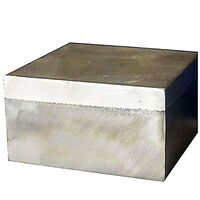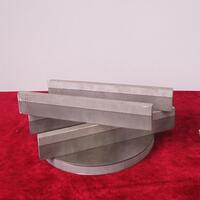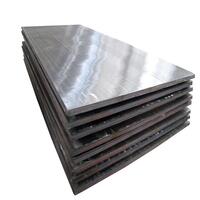1. Introduction
When you hear ‘metal clad,’ you might picture sleek modern buildings with shimmering exteriors or rugged industrial sheds built to last decades. But metal clad is far more versatile than it first appears. Whether it’s a metal clad house with a zinc facade, a steel clad building with standing seam siding, or even metal clad electrical wire running through commercial walls, this term covers a wide range of materials and applications.

In this guide, we’ll break down the metal clad meaning, explore common types like clad steel and aluminum clad stainless steel, and highlight real-world uses—from corten steel siding to pac clad standing seam roofs. By the end, you’ll understand why metal clad solutions dominate everything from residential design to heavy industry.
2. What Does Metal Clad Mean?
At its core, ‘metal clad‘ (or ‘metalclad’) refers to a composite material made by bonding two or more different metals together. This process—often through roll bonding, explosion bonding, or electroplating—combines the best properties of each metal. For example, stainless clad aluminum offers the corrosion resistance of stainless steel with the lightweight nature of aluminum.
The term also broadly applies to structures or components covered or ‘clad’ in metal for protection or aesthetics. Think metal clad walls, metal clad roofs, or even metal clad insulation used in piping systems like aluminum clad pipe insulation.
3. Common Types of Clad Metals
Clad metals come in many forms, each engineered for specific needs:

- Aluminum clad steel: Combines strength and lightness; used in automotive and aerospace.
- Copper nickel clad: Ideal for marine environments due to excellent saltwater resistance.
- Titanium clad: Offers extreme corrosion resistance for chemical processing plants.
- Stainless clad aluminum and aluminum clad stainless steel: Used where hygiene and weight matter, like food processing or medical equipment.
- 2024 T3 clad and 7075 T6 clad: High-strength aluminum alloys with corrosion-resistant cladding, common in aircraft.
These materials are often sold as plates or sheets—such as 6061 T6 aluminum plate, 316 stainless steel plate, or corten steel plate—depending on the application.
4. Metal Clad in Architecture and Building Design
Modern architecture loves metal cladding for its clean lines, durability, and low maintenance. Popular choices include:
- Metal clad wall systems using corrugated steel facade or vertical standing seam metal siding.
- Corten steel siding, known for its weathering rust patina and dramatic look—though corten siding cost can be higher than alternatives.
- Zinc metal siding and zinc clad roof options, prized for longevity and self-healing surface properties.
- Copper siding and zinc clad dormer accents for high-end residential projects.
- PAC Clad standing seam roof systems, including PAC Clad HWP and PAC Clad coping, offer commercial-grade performance with sleek aesthetics.
A steel clad house or metal clad building often features a steel facade that’s both structural and decorative, sometimes enhanced with PAC Clad column covers for visual continuity.

5. Industrial and Electrical Applications
Beyond exteriors, metal clad plays a critical role in infrastructure:
- Metal clad electrical wire (including aluminum clad wire and Cu clad wire) is used in commercial and industrial settings for its durability and fire resistance.
- Aluminum clad steel wire is common in fencing and reinforcement.
- Metal clad insulation wraps pipes and ducts to prevent heat loss and condensation.
- Metal clad sheds and utility enclosures rely on exterior corrugated metal siding for weather protection.
In manufacturing, metal steel plate—like mild steel plate, boiler plate steel, or thick steel plate—is often used as a base for clad composites or standalone structural elements.
6. Materials and Finishes: From Diamond Plate to Electroplating
The versatility of metal clad extends to surface treatments and specialty plates:
- Diamond plate steel and aluminum diamond tread plate provide slip resistance for stairs, ramps, and vehicle beds.
- Perforated plate and metal plate with holes serve decorative or acoustic functions.
- Electroplating techniques like chromium electroplating or electroless nickel add wear resistance or aesthetic finishes (e.g., chrome metal or gold coating).
- Alloy plates such as Inconel 718 plate or 4140 steel plate are used in extreme environments like aerospace or oil drilling.
Whether you need 1/8 inch steel plate for a custom bracket or 3mm aluminium checker plate for flooring, clad and solid metal plates are widely available from distributors near you.
7. Why Choose Metal Clad?
Metal clad systems offer unmatched advantages:
- Longevity: Materials like zinc clad roof or corten steel facade can last 50+ years with minimal upkeep.
- Sustainability: Most clad metals are fully recyclable.
- Design flexibility: From colorbond standing seam panels to stainless steel metal plate accents, options are nearly endless.
- Performance: Resists fire, pests, rot, and extreme weather—ideal for metal clad buildings in harsh climates.
Plus, innovations like alloy clad composites continue to push the boundaries of strength, weight, and corrosion resistance.
8. Conclusion
Metal clad isn’t just a buzzword—it’s a smart, future-proof solution across construction, design, and engineering. Whether you’re selecting a metal clad wall system for your home, specifying clad steel for industrial piping, or choosing the right metal plate for fabrication, understanding the range of options ensures better performance and value. With materials like aluminum clad sheet, stainless plate, and pac clad standing seam roofing leading the way, metal clad remains at the forefront of modern material science.
Our Website founded on October 17, 2012, is a high-tech enterprise committed to the research and development, production, processing, sales and technical services of ceramic relative materials such as Understand. Our products includes but not limited to Boron Carbide Ceramic Products, Boron Nitride Ceramic Products, Silicon Carbide Ceramic Products, Silicon Nitride Ceramic Products, Zirconium Dioxide Ceramic Products, etc. If you are interested, please feel free to contact us.
